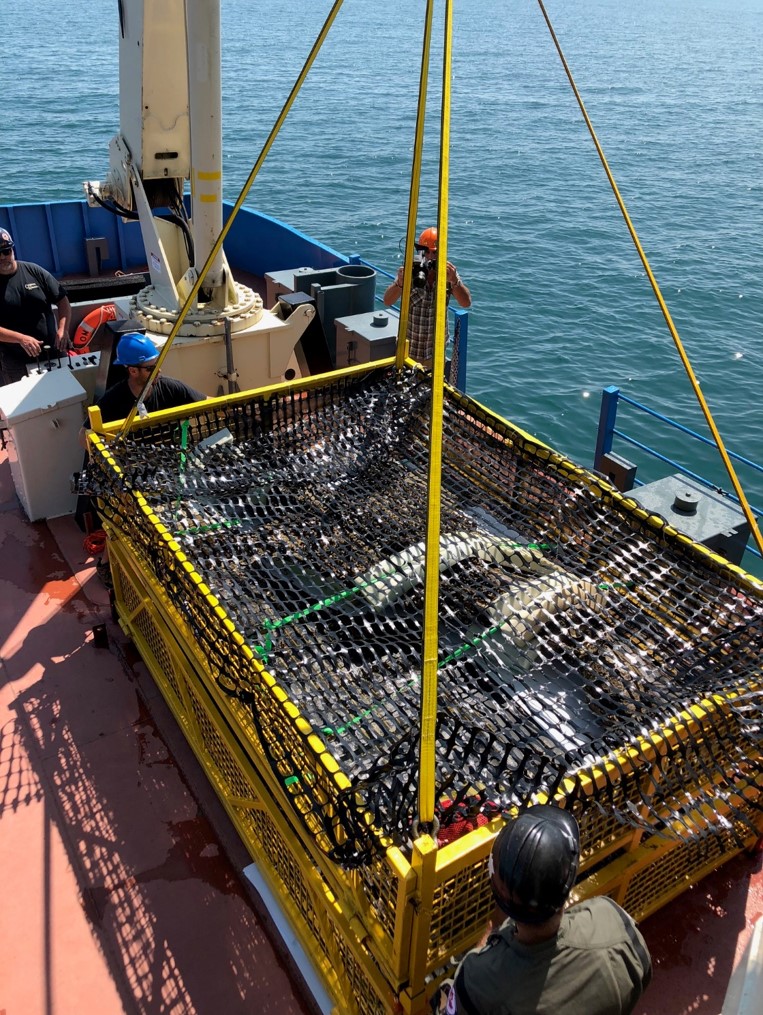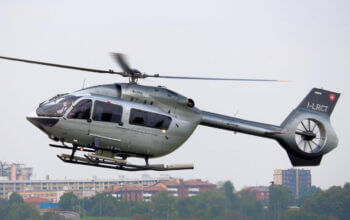Estimated reading time 6 minutes, 6 seconds.
In the waters of Lake Ontario, off the shores of Prince Edward County, divers loaded a crude metal fuselage, shaped like a rocket with delta wings, into a large rectangular cradle and gently raised it onto a ship full of expectant recovery workers.

The fuselage, covered in zebra mussels and faded yellow paint, is believed to be a delta test vehicle (DTV) for the ill-fated Avro CF-105 Arrow, and one of the few surviving relics of the only supersonic interceptor built in Canada.
“It’s kind of like tasting first blood in a search,” said Erin Gregory, assistant curator of the Canada Aviation and Space Museum (CASM), one of the supporters of the Raise the Arrow recovery project.
“These are among the last surviving pieces of that program which is so wrapped in … Canadiana,” she added. “It’s such a Canadian icon that everybody’s really excited about it.”
CASM is certain the artifact is a DTV, and is “85 per cent sure” it’s related to the Arrow program, said Gregory. Arrow DTVs would have been launched into the air to test the stability of a delta-wing configuration at transonic and supersonic speeds.
The Arrow’s delta wing design was relatively new at the time it was developed and built in Malton (now Mississauga), Ont., during the 1950s. It was an engineering marvel, and one of Canadian aviation’s greatest technological achievements.
The federal government’s decision to cancel the Arrow program in 1959 and destroy all six full-size prototypes is seen as one of the greatest lost opportunities in Canadian aviation history.
Searchers from Raise the Arrow have been trying to recover nine free-flight test models of the Arrow that were launched over from the shores of Lake Ontario.
The models are one-eighth scale replicas of the flying jet, though some are more detailed than others, and they would also have been used to test the aircraft design.
“Basically they were set up on similar launchers to what were being used to test missiles,” said Gregory, whose museum is home to several other Arrow artifacts.
“The free-flight models, for sure, were using Nike rocket boosters, solid fuel rockets, that provided about 50,000 pounds of thrust for two or three seconds.”

Both DTVs and free-flight models were instrumented, and those instruments would transmit flight data back to engineers on the ground, she said. Engineers would use the data to inform design decisions.
DTVs were an “unknown aspect” of the testing for the Arrow, and are very close to being as historically significant as the full-flight models, according to Gregory.
“It is quite possibly a very early version of what they hoped to achieve with the free-flight models,” she said.
“I think all of that really contributes to its historical significance, and certainly its significance as an object related to the Avro Arrow program … there’s just not a whole lot that survived.”
Raise the Arrow used sonar technology to recognize shapes similar to Arrow full-flight models in a search grid developed using historical research, said Gregory.
In this case, the group sent divers down to inspect the artifact and then load it, with guidance from staff of the Canadian Conservation Institute (CCI), into a cradle custom-built for this piece, then raised the cradle onto the deck of the ship.
The ship went from the Murray Canal to 8 Wing Trenton, Ont., where the team from CCI cleared off mussels with support from 8 Wing staff, said Gregory.

Workers then loaded the artifact onto a flatbed truck and took it to CASM, where the rest of the conservation work will take place under CCI leadership.
Conservation is a long, complicated process, and Gregory couldn’t offer a timeframe for its completion. If the artifact is confirmed as a DTV associated with the development of the Arrow, the museum has an internal process for acquiring it, adding it to the museum collection and ultimately putting it on display.
“There’s nothing really that moves fast in this particular process, or any of the processes, really,” she said. “It’ll probably be a good while before it’s available for public viewing, for sure.
“But we are making the effort to keep the public apprised of the various steps throughout the process.”
This will include photos on social media and a blog-style website that will provide an ongoing storyboard about the conservation process.
“These prototypes really serve to tell the story about how this Canadian icon was built, and what scientific, technological, and engineering methods went into its creation,” said Gregory.
“And from our perspective, being able to share that with the Canadian public–it’s a wonderful opportunity to talk about the behind-the-scenes of aircraft development.”









is there a museum exhibit planned for the found material? i may have something small to donate to the collection